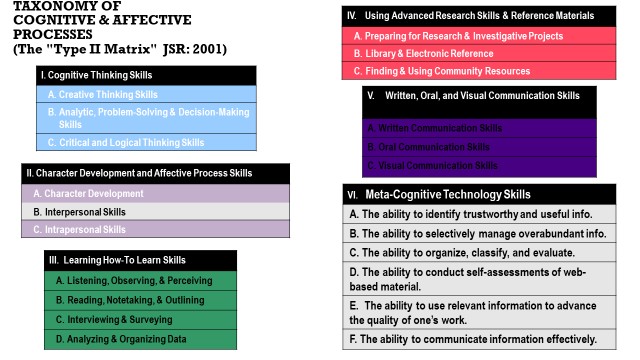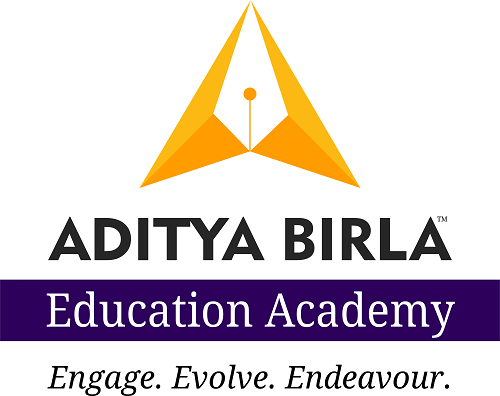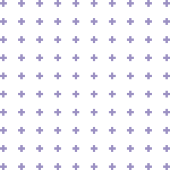For students who have been identified as advanced, gifted, and/or talented in particular areas of study, it is often a natural tendency to aspire to advance their abilities in a manner that can easily be documented and followed by teachers, parents, and administrators. However, in that last sentence, there may be someone who is left out. In addition, does the documentation of abilities in a statistical and logistical manner truly equal success for the child? What does this accumulation of knowledge at a faster rate, without a defined reason, other than acceleration, truly aspire to, for the young person? The student and their personal role in their classroom work, endeavors, and what they choose to pursue may actually have an adverse effect on the goals that the teachers, parents, and administrators are trying to achieve if the primary goal for the adults is acceleration. Acknowledging and then allowing the student’s perspective on prospects for enrichment that take into consideration their interests, learning styles, and preferred modes of expression create self-efficacious opportunities for young people to engage in self-discovery, challenging ideas, and new concepts that may be of interest to them.
Differentiation and Enrichment These are two powerful words in education today.
How can we best use these words and more precisely how can we best use the true meaning of these words within our classrooms, and, for each and every one of our students? In addition, how can we infuse enrichment into our classes so as to provide differentiation for each of our students?
These are the questions that can be answered with great joy by each teacher who asks them. With a discovery of each educator’s own individual interests, talents, and gifts as a means to recognize and empower their own individuality, that teacher begins a journey. The curriculum with which the teacher is provided is a base from which this journey begins.
Also read: Why is Blended Learning a perfect match for Inclusive Education? Each child has their own interpretation of what is learned in a classroom, even if the same curriculum is taught to all children in a challenging and precise manner. Regardless of the curriculum’s main objective, the experiences, interests, and social-emotional lives of the students who learn it will each walk away with different interpretations, however slight they may be. For each child, infusion of enrichment and differentiation based on interests, learning styles, and preferred modes of expression as well as ownership of what is learned and allowance to form and share new ideas becomes the inspiration for creation within and outside of the classroom.
The power of this inspiration and creation is what will transform our world. The leaders, artists, scientists, musicians, mathematicians, singers, songwriters, naturalists, doctors, peacemakers, and everything else one can think of, will arise from the classrooms that we create, today.
For whom are we creating enrichment?
For whom are we differentiating?
For whom are we helping to define and understand the best and most beautiful elements of self?
That individual is each and every child who we meet when we utilize the tools of the Schoolwide Enrichment Model.
When we offer the opportunity for young people to discover their gifts and talents, interests, learning styles, and preferred modes of expression, each of them has the opportunity to discover who they are, and who they can become.
Once children are made aware of these pieces of themselves, and are then given the opportunities, through the SEM?s infusion of enrichment into the regular classroom, the commencement of real, authentic, and personalized learning begins.
As Dr. Renzulli explains, it is important to “inject enrichment activities into any and all regular curriculum topics. When it comes to “the rules,” Dr. Renzulli suggest applying as many of the possible, as follows:
- There is not always a single, predetermined, correct answer.
- School and class is something kids do rather than sit and listen.
- School and class is something that is fun for most kids.
- School and class has various levels of challenge to which interested students can escalate.
- Type I opportunities offer students a chance to see beyond the curriculum and discover something within it that appeals to their own interests, learning styles, and preferred modes of expression. A Type I provides experiences and activities that are purposefully designed to expose students to a wide variety of disciplines, topics, issues, occupations, hobbies, persons, places, and events not normally covered in the regular curriculum.
Here is where differentiation finds each child. The teacher, who now becomes the facilitator, can step aside, and the student can become the “practicing professional.” From the curriculum, the student discovers his interest and dives into that interest so as to learn more, utilizing Dr. Joseph Renzulli’s Type II Taxonomy of Cognitive and Affective Processes:

This taxonomy expresses the power of research, but in more than “writing a research paper” sense that so many young people consider and currently understand research to be. The taxonomy takes into consideration, not just Cognitive Thinking and Advanced Research Skills and Reference Skills, but also Character Development and Affective Process Skills, Oral and Visual Communication Skills, Learning How-To-Learn Skills and now, Meta-Cognitive Technology Skills.
From the perspective of the student, this taxonomy is a human, breathing, and ever building opportunity. It comes from a space that is alive and invested in the young person’s interest, and it relies on how that young person thinks, feels, identifies, and expresses what has been discovered. In addition, this work considers the young person as the bearer of these discoveries. The young person is growing, connecting with others, as well as self, and making decisions as to how he will present his findings.
What Joe Renzulli has created for teachers to focus on is what he calls the three Es: Enjoyment, which leads to Engagement, which leads to Enthusiasm for Learning. From the teacher’s perspective, following up that light of the three Es in the classroom with opportunities, resources, and encouragement creates a powerful recipe: this is the recipe for ownership, self-efficacy, and for new ideas. By continuing with their students, teachers can follow-through to what we call Type III Enrichment, where students become “experts” through hands-on activities that use research skills to solve real world problems and creative projects are shared with appropriate audiences.
No, the sky is no longer the limit. For each child, the SEM releases the boundaries that curriculum can create. For teachers, the SEM allows for curriculum to become the strong base, from which differentiation and enrichment can arise, for each child, as self-efficacy is established, and as each child comes to understand that there is more to who they are: more than a test-score, or a letter grade. There is more to who each of them is, right now, and who they can and will become, as they learn about who they are, and what their gifts and talents may be. That is the most exciting and challenging, and enriching class that any child could ever hope to be in. A class that is, truly, all about them. That class is differentiated, and enriched.
 My friend, Mekhi, a student from New Mexico, is a wonderful example of what happens when a student is provided with curriculum, an opportunity to consider his own interests with regard to the curriculum, as well as how to utilize his love of language, speaking, presenting, and creating opportunities for other people to hear how he hopes the world will change, and why. Please take a moment to be his authentic audience, and to make sure that he is sure to know that his voice, filled with passion, incredible language acquisition, and pride in his work – is heard.
My friend, Mekhi, a student from New Mexico, is a wonderful example of what happens when a student is provided with curriculum, an opportunity to consider his own interests with regard to the curriculum, as well as how to utilize his love of language, speaking, presenting, and creating opportunities for other people to hear how he hopes the world will change, and why. Please take a moment to be his authentic audience, and to make sure that he is sure to know that his voice, filled with passion, incredible language acquisition, and pride in his work – is heard.
Oh, and by the way, this piece, which he wrote by himself, and which was filmed during his own time, received no grade. It was done because he thought it was needed, and because he wanted to write it, and perform it.
Consider how much he understands, what he has learned, what he teaches us, and wonder – to yourself and with others – what might be his next step, if he is provided with more opportunities, like this.
We can see that, when young people become part of their own differentiation, owning their learning, and how they best learn, and when they are allowed to create with their gifts, talents, and skills, the sky is no longer the limit. It is just the beginning.







